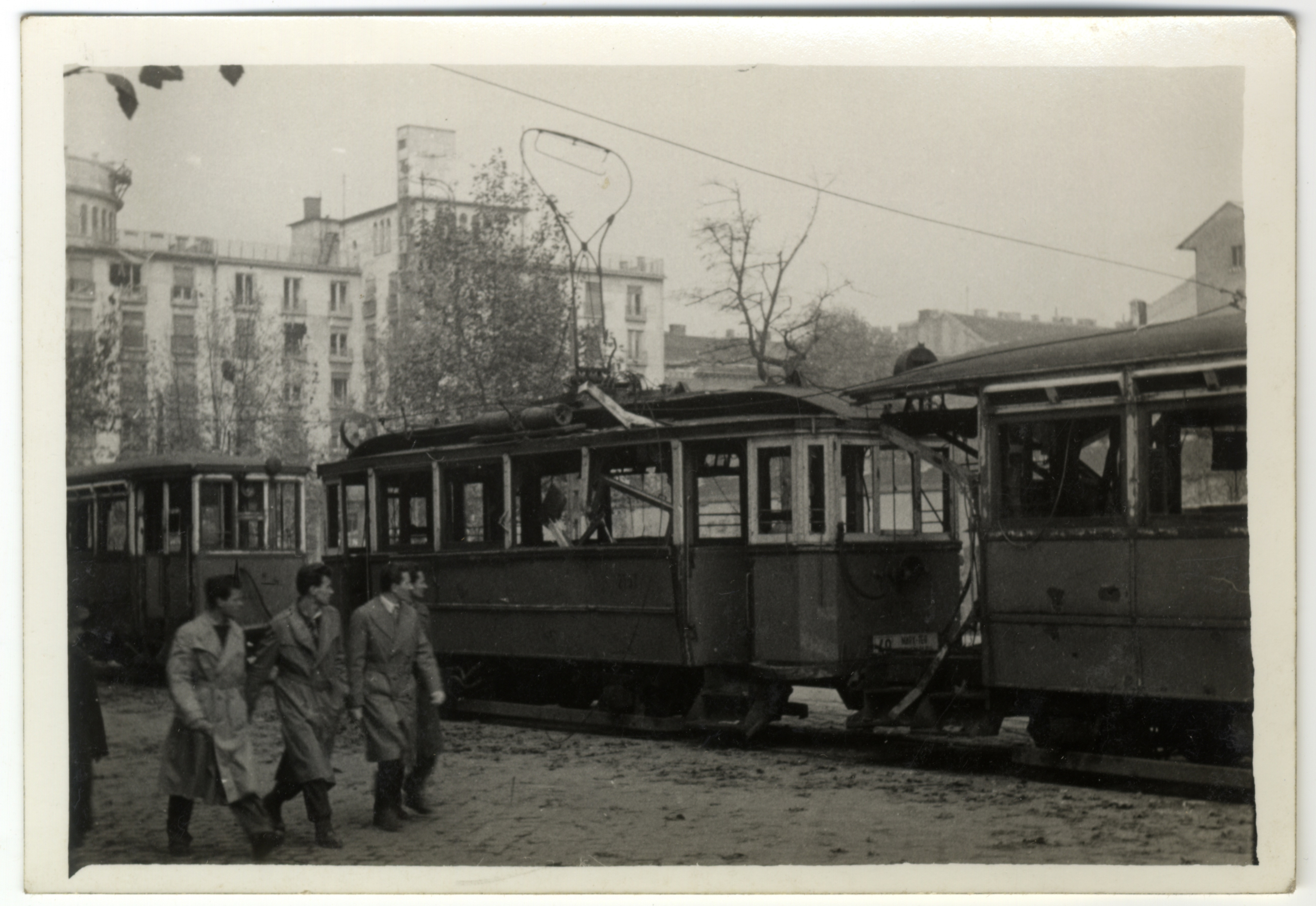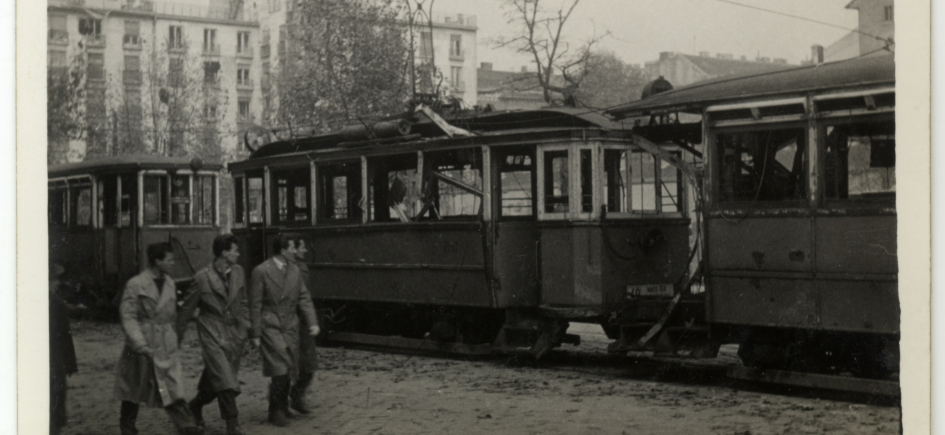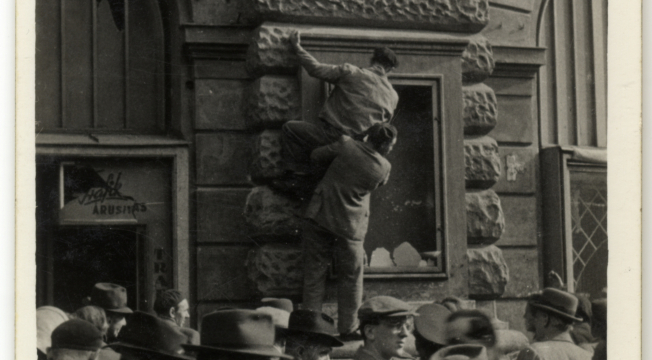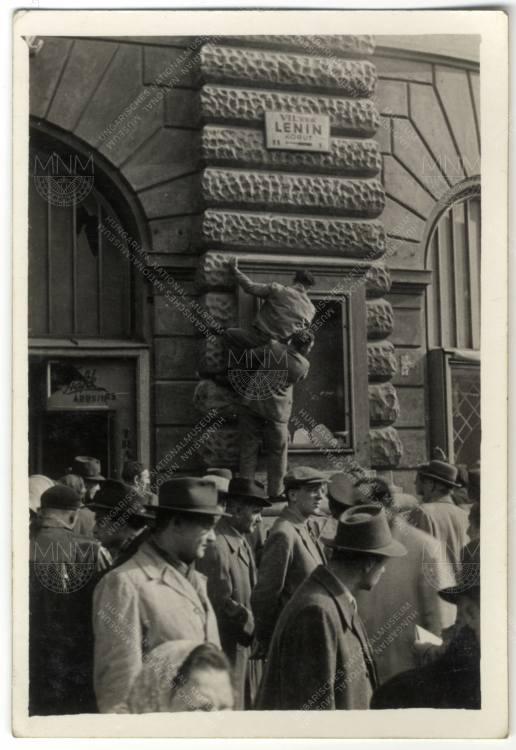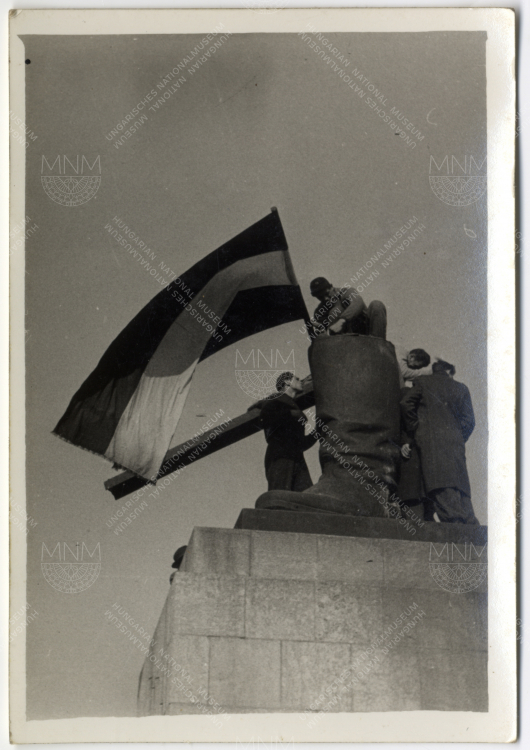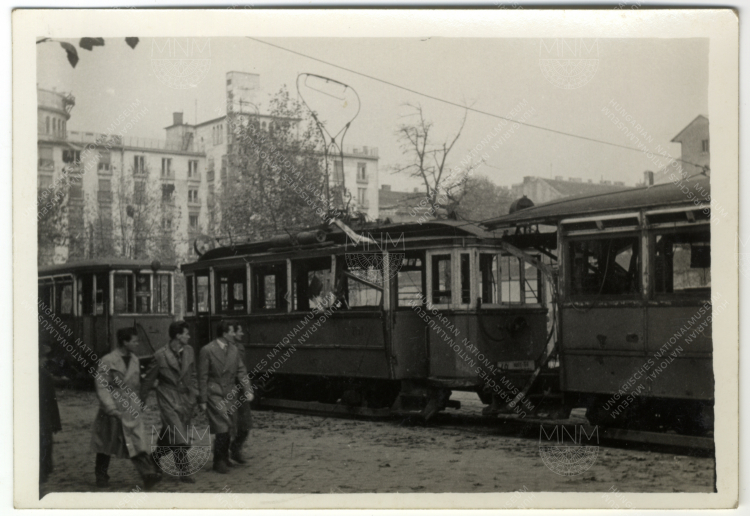
The FORTE photo-box was in a parcel packed by Mrs. István Pálfalvi, née Klára Pap, deceased in August, 2019 for her godson in case her time was up…
The content of the little box surprised most family members, as they only heard about how István Pálfalvi, deceased in 2004, had photographed „all” the 1956 revolution. The young engineer and lecturer, freshly graduate from Budapest University of Technology thought it best to hide the pictures probably developed in his own dark room from his closest relatives. His widowed mother and younger siblings knew that the young professional, who was the chief breadwinner for his family, had kept roaming the streets in October, 1956, but they never asked him what he had seen and experienced in turbulent Budapest. István Pálfalvi started to talk about his photos only after the political transition of 1989. He has enlarged a few pictures he specially treasured and showed them to his confidants. But he never ever spoke about the content of the box, the story of the photos, so the historians of the National Museum are left to do the work of identifying the exact times and places of them.
The photos arriving at the collection of the museum do not only evoke the city of Budapest during the revolution. They also recall the fear afterwards, they recall the Kádár-régime crippling millions, demanding silence, lies and secretiveness, a period when a box of photos could easily have ruined not only the lives of its maker together with his family, but also those appearing on the pictures.
Dr. István Pálfalvi was born in Rákospalota in 1930, to a Roman Catholic family. He started his studies in a secondary grammar school of the Piarist Order in Tata, then, after the closing of the school in 1948, he continued them in the Budapest Piarist Secondary Grammar School and eventually took his final exams at Wagner Secondary Grammar School in Rákospalota. He graduated from Budapest Technical University as mechanical engineer and went on teaching there until his retirement. The university leadership did not permit him to carry on his studies and acquire a Ph.D. degree, so he studied special engineering and got a degree in reactor engineering. Until the late nineties he was a lecturer of technical mechanics at Paks College of Technical Energetics. He got married in 1961 and had no children. His life-long passion was photography.
